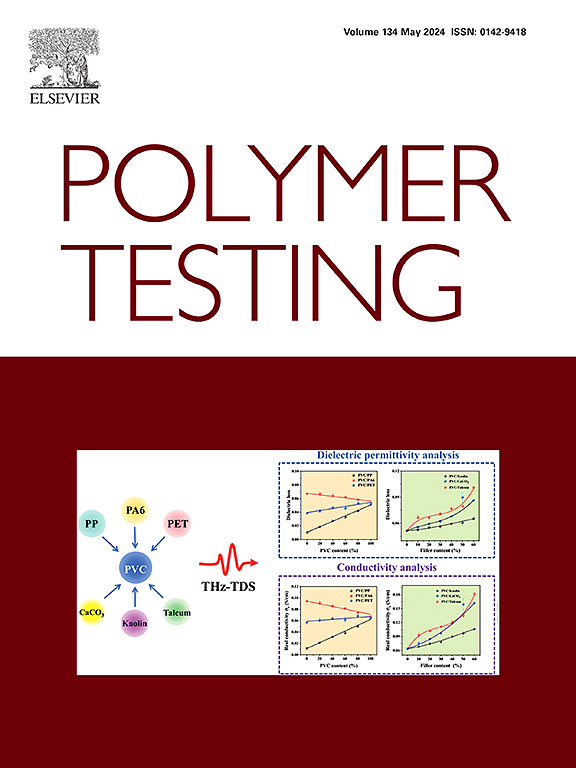Comparative study of flexural behaviour of carbon fiber reinforced polymer (CFRP) bars and strands
IF 5
2区 材料科学
Q1 MATERIALS SCIENCE, CHARACTERIZATION & TESTING
引用次数: 0
Abstract
Extensive research has been performed on the tensile properties of carbon fibre-reinforced polymer (CFRP) material used in both standalone and rehabilitation applications. Limited knowledge and design guidelines exist on the flexural behaviour of CFRP cable strands (herein strand) and reinforcing bars. This knowledge gap hinders the widespread use of strands and CFRP bars in prestressed structures and restricts their market share compared to reinforcing steel members. To address this gap, this study investigates the flexural behaviour of CFRP strands and reinforcing bars using a combination of experimental and numerical methods. A standard three-point bending test is employed to measure the flexural strength and ultimate curvature radius of strands and bars. The experimental study included strands of diameters 10.2 mm and 15.2 mm, and CFRP bars of diameters 9 mm, 12 mm, and 14 mm. Finite element analysis has been conducted to further investigate the flexural performance and failure mechanisms of the specimens. The test results indicate that the ultimate bending radius of the strands is approximately one-half of that of the bar, while their ultimate bending strength surpasses the bars by at least 10 %. Optimal lay lengths for the 10.2 mm and 15.2 mm cable strands are proposed based on the simulation results.
求助全文
约1分钟内获得全文
求助全文
来源期刊

Polymer Testing
工程技术-材料科学:表征与测试
CiteScore
10.70
自引率
5.90%
发文量
328
审稿时长
44 days
期刊介绍:
Polymer Testing focuses on the testing, analysis and characterization of polymer materials, including both synthetic and natural or biobased polymers. Novel testing methods and the testing of novel polymeric materials in bulk, solution and dispersion is covered. In addition, we welcome the submission of the testing of polymeric materials for a wide range of applications and industrial products as well as nanoscale characterization.
The scope includes but is not limited to the following main topics:
Novel testing methods and Chemical analysis
• mechanical, thermal, electrical, chemical, imaging, spectroscopy, scattering and rheology
Physical properties and behaviour of novel polymer systems
• nanoscale properties, morphology, transport properties
Degradation and recycling of polymeric materials when combined with novel testing or characterization methods
• degradation, biodegradation, ageing and fire retardancy
Modelling and Simulation work will be only considered when it is linked to new or previously published experimental results.
 求助内容:
求助内容: 应助结果提醒方式:
应助结果提醒方式:


